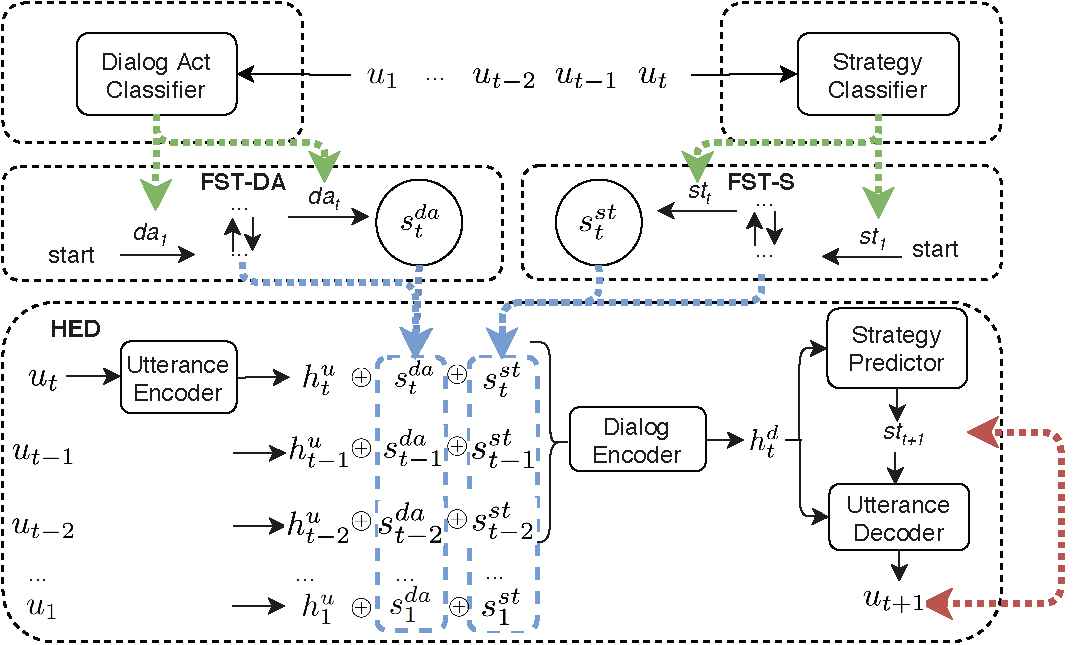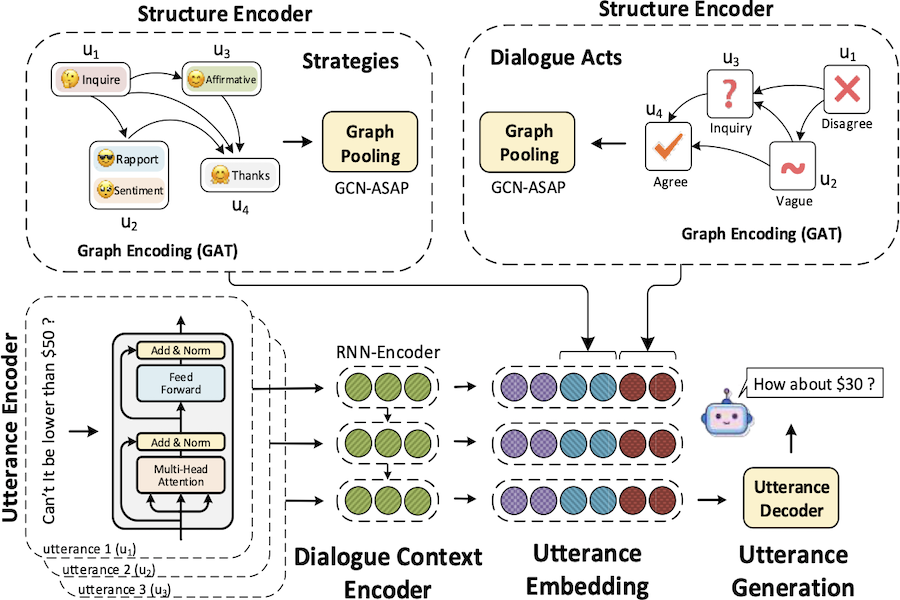
Strategic Non-collaborative Dialog Agents
Negotiation is a complex activity involving strategic reasoning, persuasion, and psychology. Our first goal is to assist humans to become better negotiators through a machine-in-the-loop approach that combines machine’s advantage at data-driven decision-making and human’s language generation ability. We consider a bargaining scenario where a seller and a buyer negotiate the price of an item for sale through a text-based dialog. Our negotiation coach recommends tactics in real time to the seller to get a better deal. Evaluation on human–human dialogs shows that our coach increases the profits of the seller by almost 60%.

Our second goal is to build an automated negotiating system that attempts to sell products. However, due to its non-collaborative nature, it is not effective to model dialog history with a traditional RNN. Therefore, we propose to explicitly model both tactic and semantic history with a finite state transducer (FST). Experimental result shows that FST can model tactic history better than a RNN in non-collaborative settings and modeling both semantic and tactic history achieves the best result.
DialoGraph: Incorporating Interpretable Strategy-Graph Networks into Negotiation Dialogues
Pragmatic planning of negotiation strategies is essential to successfully negotiate a deal. Modern systems generate fluent sentences but lack pragmatic ground and can’t reason strategically. Our system incorporates pragmatic strategies explicitly using graphs. Also, it gives interpretable prediction of future optimal strategies. We incorporate the learned graphs into an end-to-end negotiation dialogue system and demonstrate that it consistently improves future-strategy prediction and downstream dialogue generation, leading to better negotiation deals (sale prices). We also demonstrate how to interpret intermediate structures and learned sequences of strategies, opening-up the black-box of end-to-end strategic dialogue systems.

Utterances are encoded using BERT and passed to the Dialogue Context Encoder. It is enriched with explicit strategy and dialogue act sequence encodings from the Structure Encoders. The structure encoder consists of layers of Graph Attention Networks followed by Adaptive Structure Aware Pooling which is used to learn strategy influence and association scores.

People
Yiheng Zhou
Rishabh Joshi
Vidhisha Balachandran
Related Papers
- DialoGraph: Incorporating Interpretable Strategy-Graph Networks into Negotiation Dialogues, (Joshi et al., 2021), ICLR
- Augmenting Non-Collaborative Dialog Systems with Explicit Semantic and Strategic Dialog History, (Zhou et al., 2020), ICLR
- A Dynamic Strategy Coach for Effective Negotiation, (Zhou et al., 2019), SIGdial



